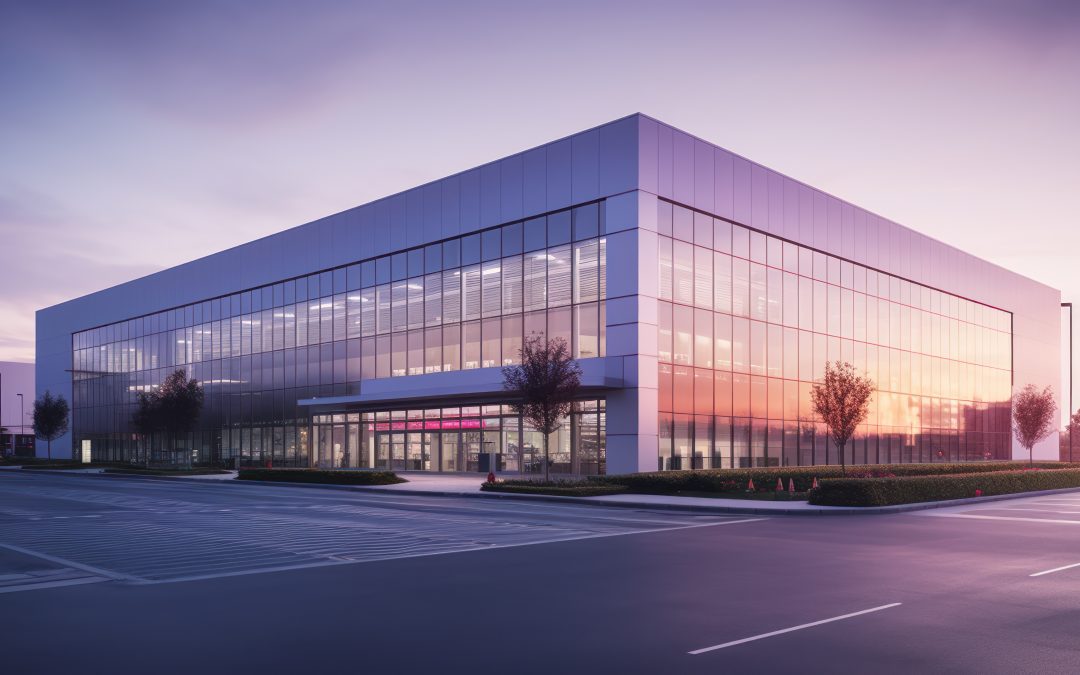Making commercial buildings more energy efficient has been a key priority for both corporations and government policy over recent years.
Commercial Energy Performance Certificates (EPCs), introduced in 2008, are designed to provide information into the potential costs of heating and lighting a commercial property, alongside its expected carbon emissions.
Since 2018, the Minimum Energy Efficiency Standards (MEES) have required commercial buildings to achieve at least an E rating before they can be leased to new tenants. Although the plans to raise this standard to a B rating by 2030 have been “scrapped”, the conversation is far from over. And with talk around climate change towards the top of election debates, it’s no doubt an area that will continue to be scrutinised with further changes to come.
And it’s not just about meeting EPC thresholds. Maximising energy efficiency in commercial buildings helps commercial landlords attract tenants, increase portfolio value and reduces operational costs.
So, what steps can you take towards increasing your energy performance to an A rating?
Monitor and Manage Energy Use
In order to improve your energy efficiency, you need to understand your current position.
Investing in energy monitoring systems is an excellent first step towards improving your EPC rating. By tracking energy consumption, you can identify areas for improvement and adjust building operations to optimise efficiency over time.
Implementing a Building Energy Model using certified software allows for a comprehensive analysis of your building’s energy use, pinpointing specific areas of concern and providing insights into where performance can be enhanced.
With continuous monitoring, you can gather valuable data that helps in making informed decisions about energy management. This proactive approach not only ensures compliance with regulations but also contributes to significant cost savings and environmental benefits.
Upgrade HVAC Systems
HVAC systems are among the largest energy consumers in commercial buildings, making their efficiency a critical factor in improving your EPC rating. In fact, the Carbon Trust estimates that businesses in the UK waste up to £1.6 billion annually on energy that could have been saved through updating heating, ventilation and air conditioning systems.
Start by replacing old boilers with energy-efficient models that consume less fuel and operate more effectively. Consider incorporating renewable heating options such as heat pumps or solar thermal systems.
Installing smart heating controls can further optimise energy use by adjusting temperatures based on occupancy and use patterns, ensuring that heating and cooling are provided only when needed.
By focusing on enhancing the efficiency of your HVAC systems, you can achieve substantial energy savings and move closer to an A-rated EPC.
Upgrade Insulation and Building Envelope
Improving insulation is a fundamental step in enhancing your building’s energy efficiency and working towards an A-rated EPC. Research carried out by the Institute of Building Technology/Institute of Sustainable Energy Technology, School of the
Built Environment and the University of Nottingham, heat loss in commercial buildings is made up of around 40% from external walls, 47% from windows and 13% from ceilings and flooring. Therefore, enhancing insulation in these areas is vital.
To take the step towards an A- rating, don’t overlook less common areas for insulation, such as pipes, electrical outlets and ducts.
By focusing on improving the building envelope, you can create a more thermally efficient environment, leading to lower energy consumption and increased comfort for occupants.
Updating Lighting
Lighting accounts for approximately 17% of all energy consumption within commercial buildings, so upgrading your lighting systems can be a key element of energy performance.
LED lights consume significantly less energy compared to traditional incandescent or fluorescent bulbs. They offer longer lifespans, reducing the frequency of replacements and maintenance costs. Additionally, LEDs provide better lighting quality, which can improve the working environment for occupants; therefore, upgrading outdated lighting to LED will help you on your way towards a higher EPC rating.
Consider installing motion sensors and automatic dimming controls to optimise energy use further. These technologies ensure that lights are only on when needed, reducing unnecessary energy consumption.
Implement renewable energy
Incorporating renewable energy solutions into your building’s energy strategy is a powerful step towards achieving an A-rated EPC. By generating clean energy on-site, you can significantly reduce your reliance on non-renewable resources and lower your overall energy consumption.
Consider installing solar panels on the roof or other suitable areas of your property. Solar energy is a highly efficient and sustainable way to produce electricity, and advances in technology have made it more accessible and cost-effective than ever. Similarly, wind turbines can be an excellent option if your location has favourable wind conditions, providing a consistent and renewable energy source.
Other renewable energy systems to explore include geothermal energy for heating and cooling or biomass boilers that use organic materials for fuel. These solutions not only contribute to a greener environment but also offer potential financial benefits through reduced energy bills and possible government incentives.
While obtaining an A-rated EPC score can be challenging, any improvements in your energy efficiency will help to create a more sustainable and cost-effective building.
By taking these proactive measures, you can ensure that your building remains commercially competitive, attractive to tenants, and compliant with current and future regulations.
Please contact us if you are looking for a more tailored plan for upgrading your building to A-rated.


Recent Comments